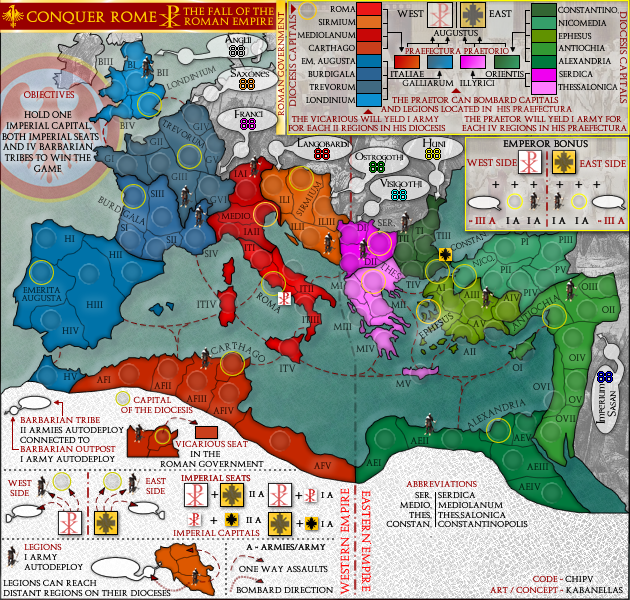As I’ve said before I’m totally confident on what this map represents in terms of game-play. And I can’t possibly dissociate the barbarians and the important role they meant in terms of bordering relations with the Empire and their growingly assimilation that took place throughout the last couple of centuries of the Western Empire.
One thing I wanted to avoid here (mainly because we’re dealing with a different age of the empire) was the ‘monolithic’ aspect of Qwert’s Imperium Romanum. That just wouldn’t make sense when you are focusing on the late 3rd and 4th centuries. With a big plus – it will add extra value to the game-play and its victory conditions.
The fact that you can play both roles will always happen in every historical map. It happens in the Third crusade for instances, where you can start with both London and Cairo. Two opposite factions that are both starting points.
As for your last question Marshal…
I always expect to go a little step further in terms of game-play. I try to do it in every map as I did in a more affirmative way with King’s Court. Conquer Rome ends up to be the natural direction – a mix between certain aspects of King’s Court style of game-play and strategic dynamics blended with all my other previous maps.
But don’t get me wrong, I don’t have anything against straight-plain-risk-style maps. In fact I love them – but there are plenty around.









































































